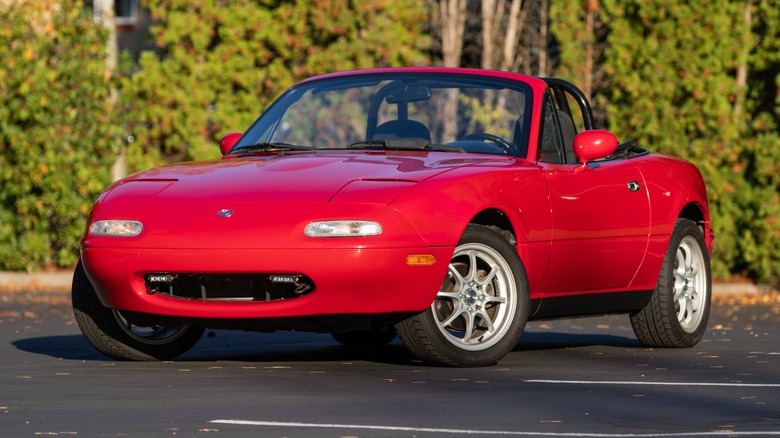How Many States In The U.S. Require Front License Plates?
You've probably noticed some cars driving around without a license plate on the front bumper while traveling, and you may have wondered whether every states requires one. There are, in fact, a large number of states where not having a front plate is totally legal.
Laws surrounding front license plates can be a bit tricky to navigate. States have varying views on front plates and the punishments you'll get for forgoing one. Some states, however, can fine drivers hundreds of dollars for going on a cruise or errands without a front plate — it could even contribute to an eventually suspended license. If car owners want to avoid getting pulled over, or worse, they'll need to be aware of their state's policies regarding front plates.
Currently, over half of the states in America require drivers to have a front license plate. Is your state one of them? Here are the states where drivers need a front license plate and the reasons behind it — despite some cars looking better without one.
Which states require a front license plate?
There are 29 states that require cars to have a license plate on both the front and back bumper. Here are the states where cars need a license plate in the front:
- California
- Colorado
- Connecticut
- Hawaii
- Idaho
- Illinois
- Iowa
- Maine
- Maryland
- Massachusetts
- Minnesota
- Missouri
- Montana
- Nebraska
- Nevada
- New Hampshire
- New Jersey
- New York
- North Dakota
- Oregon
- Rhode Island
- South Dakota
- Texas
- Utah
- Vermont
- Virginia
- Washington
- Wisconsin
- Wyoming
Washington, D.C. residents are also required to have a plate on the front and back of every car. Of course, there are exceptions to this rule, both there and in the above 29 states. This can include historic and classic cars, motorcycles, and commercial vehicles, but you'll need to check your state's laws to see what these exceptions are. For example, New York's only exception to the front-license-plate rule is if you are driving a motorcycle.
Why do some states require a front license plate?
A lot of car enthusiasts prefer to keep off the front license plate due to aesthetic reasons, including cool cars with designs that don't really have license plates in mind. "Lots of nice cars in the area, and the last thing you want to do is drill holes into the body work to mount an ugly license plate," wrote one Reddit user on r/AskLosAngeles. So rather than have the license plate hanging off the side or bottom of the car's nose, some drivers decide to forgo the front license plate altogether and let the car's grille shine. But states have their reasons for requiring front license plates, and it's not about whether a rare plate can be valued at over $24 million.
One advantage of having a front license plate is all-around visibility. First and foremost, license plates help police identify cars. Drivers who break the law can be found more quickly if police and witnesses can spot both a front or back license plate, whether the car is parked in a crowded parking lot or speeding down the highway. License plates also can be a key factor when law enforcement is hoping to identify suspects involved in robberies, murders, and other violent crimes. And there's another benefit — drivers can get assistance faster when something is wrong if their license plate is visible.
What is the punishment for not having a front license plate?
The punishment for missing a front license plate varies from state to state, even case to case. While some drivers without a front plate have evaded tickets and fines for decades, others have come out of the store to find a ticket on their car. The penalty is often a fixed amount that's cemented within a state's motor vehicle code. For example, California's fine for forgoing a front plate is $197, as stated in Vehicle Code Section 5200, which says cars need to display both front and rear plates.
Generally, it's safer to forgo style and put a license plate on the front and back of a car in a state that requires it. However, a lot of drivers feel it's worth the risk — and some have even reported that they'd rather pony up for tickets than slap a plate on the front of their cars. Said one Tesla driver on r/TeslaModel3: "Got pulled over for tint. Got written up for both tint and license plate. ... Decided to pay the fines and keep my tint and no front plates."



